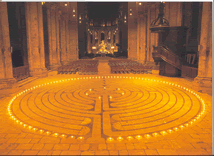If you can practice even
when distracted, you are well trained.
From the Lojong for the Layperson booklet:
Meditation allows us to see just how jumbled and busy our
minds are. The goal of mindfulness is to learn how to develop one-pointed
attention, so we can choose what to be focused on rather than be at the mercy
of whatever arises. This discipline of the mind is not meant to be harsh but
gentle and relaxed. Instead of waging war on our distracting thoughts, we can
use them to return us to the “default setting” of mindfulness. It is similar to
daydreaming and driving; we suddenly wake up when the tires run off the smooth
road onto the shoulder. Instead of struggling with distraction, we use it as
leverage to help us resume our focus. It parallels the Zen saying: “When you
fall down on the ground, you use the ground to get up.”
Photo: Quartz point surrounded by autumn
dogwood leaves and pine straw.
Frequent beach-goers, particularly those who are fond of
getting in the ocean, are well aware of rip currents. Breaks or low points in
sand bars can create a channel for water to flow rapidly back out to the sea. A
snorkeler caught up in undersea sights or a person on a float enjoying the sun
might suddenly find they have been pulled many yards out to sea. If they panic
and try to swim back to shore, they will find this current moves much faster
than they can paddle. Trying to fight it will only result in exhaustion. Experienced
ocean swimmers know that the neck of the rip current is usually not very wide.
They will swim parallel to the shore rather than perpendicular, allowing them
to move out of the current and eventually back to the shore. Using the slogans
in all of my affairs can help me become an experienced practitioner. When I
find myself caught up in distractions, I can use them to wake me up. Instead
seeing them as an adversary, I can view these disturbances as a reminder to “Keep Calm and
Carry On.*”
*A 1939 British motivational poster produced by the government in
preparation for World War II.









